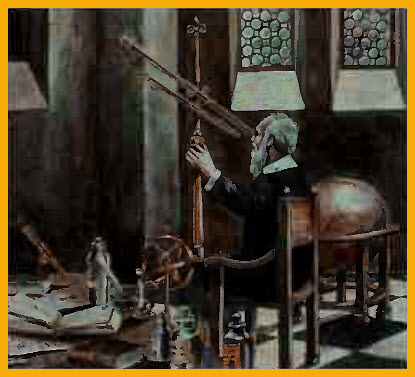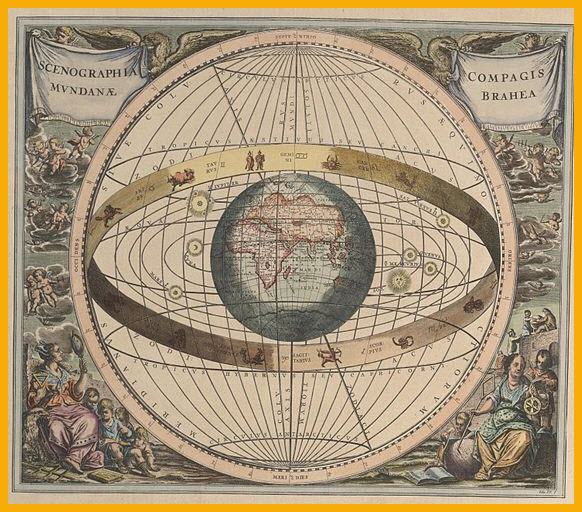Just by looking at the stars, one can get an idea of how infinitely large the universe must be. Countless stars and galaxies are scattered all over this enormously vast space, with immense distances between one another. Today's scientists use radiation emitted from space, as well as state of the art telescopes to explore the mys- teries of the universe. Data is collected, analyzed, and interpreted in order to create theories and physical mod- els to explain the universe's origins and development. The currently accepted theory assumes that the universe originated from an unprecedented, singular explosion.
From the beginnings of astronomy
The mere observation of celestial bodies made it possible to make calcula- tions based on calendars and navigation. With the dawn of modern physics, the first verifiable explanatory models for cosmic events were developed.
ASTRONOMY
The magnificent, starry sky has always inspired the human imagination. A growing understanding of geography, mathematics, and physics over the millennia has ensured that astronomy has never lost its ability to help us explore new realms of the unknown. Today, modern technology continues to drive this age-old cosmic search.
People in the ancient civilizations of Egypt, Babylonia, China, and in Middle America were already making systematic observations of celestial events in the fourth millennium B.C. Thus, they were able to create calendars and predict eclipses of the sun and moon. They also tried to use the stars to identify and understand the influence of the gods on their own fate.
 |
Pict Astronomy: 16th-century scientist Galileo Galilei improved the telescope for consequent astronomical observations. |
The ancient Greeks heirs of Babylonian knowledge continued to develop these observations in order to seek, above all, the causes for celestial events. The Greeks already knew not only that the Earth was a sphere, but also its approximate circumference, and could determine the distances and sizes of the sun and moon. Nevertheless, a heliocentric worldview, in which the sun is central, did not achieve acceptance.
Instead, the Earth remained the central point of reference. The movements of plan- ets were explained by assuming they moved in small circles, so-called epicycles. In turn, these circular movements were incorporated into their respec- tive orbits around the Earth. In approximately A.D. 150, Ptolemy provided a comprehensive description of this epicycle theory in his manual called the Almagest.
The road to modern astronomy
In the 15th century, more exact measurements of the planets' orbits identified inaccuracies in the epicycle theory. For this reason, in the 16th century Nicolaus Coper- nicus began advocating the heliocentric worldview. Tycho Brahe made further mea- surements, which Johannes Kepler used to recalculate the planets' orbits. He was able to prove that the planets move in elliptical orbits around the sun. The heliocentric worldview was further supported around this time by observations made with the recently invented telescope.
In the 17th century, Isaac Newton set down the theoretical foundations for modern physics. His law of gravity also provided a scientific explanation for the elliptical orbits calculated by Kepler. A great deal of work by other researchers followed these developments, including work regarding the speed of light, the distance to the sun and the radius of the Earth.
During the 19th century, Joseph von Fraunhofer discovered the spectral lines in the spectrum of sunlight. Building on this finding, Gustav Robert Kirchhoff and Robert Wilhelm Bunsen established spectral analysis. For the very first time, scientists could investigate the chemical and physical characteristics of stars and other celestial bodies.
Astronomy In the 20th century, Hans Albrecht Bethe and Carl Friedrich von Weizsacker explained that nuclear fusion provides a source of energy for stars.
THE ASTROLABE
The astrolabe was once an astronomer's most important instrument Astronomy, used to calculate the positions of the stars and represent them in two dimensions It was often made of brass, with rotating disks, degree scales, pointers, and a sight rule. It was replaced by more precise instruments and methods during the course of the 16th century.
 |
Pict: The curved spikes on this 18th century Persian astrolabe mark the brightest stars. |

